Southwest Michigan field crops update – May 22, 2025
Wheat is heading out and just starting to flower on some acres. Cool weather slowed down corn and soybean progress.

Weather
Temperatures cool dramatically over the weekend and will continue for the next few days. Sporadic precipitation and cool temperatures resulted in prolonged periods of leaf wetness. Temperatures will start to warm up over the weekend. Next week is expected to be dry, which bodes well for planting and fieldwork.
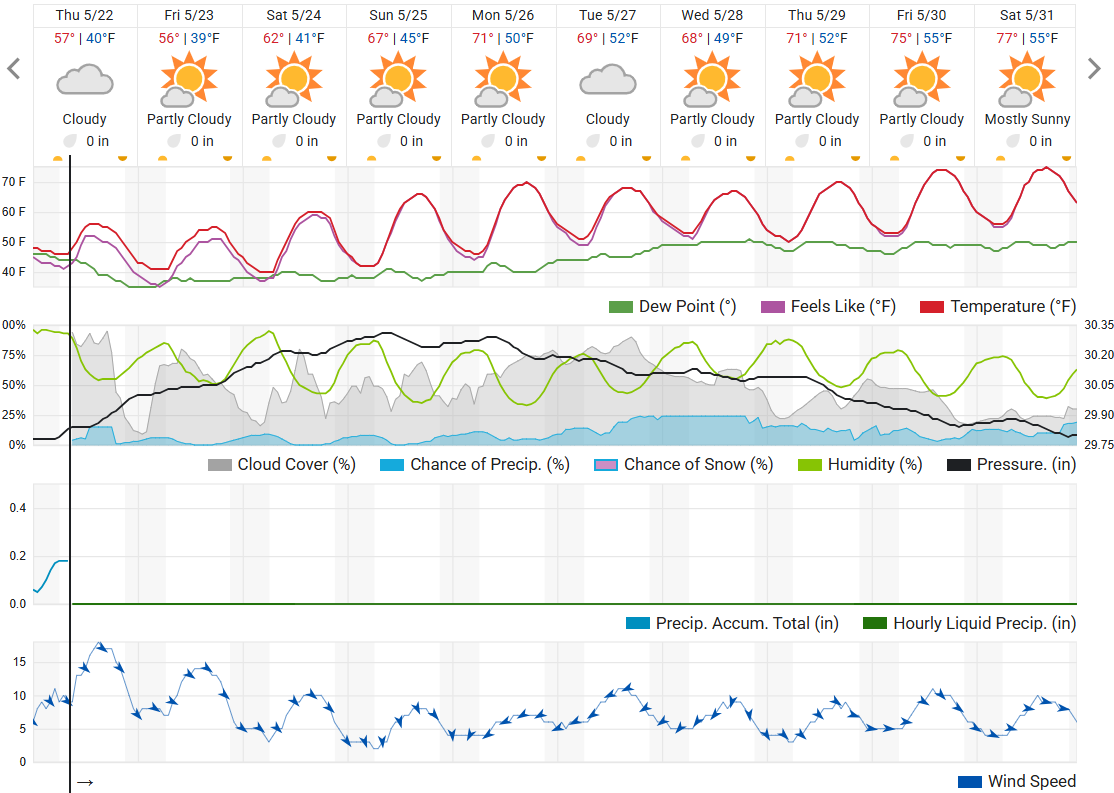
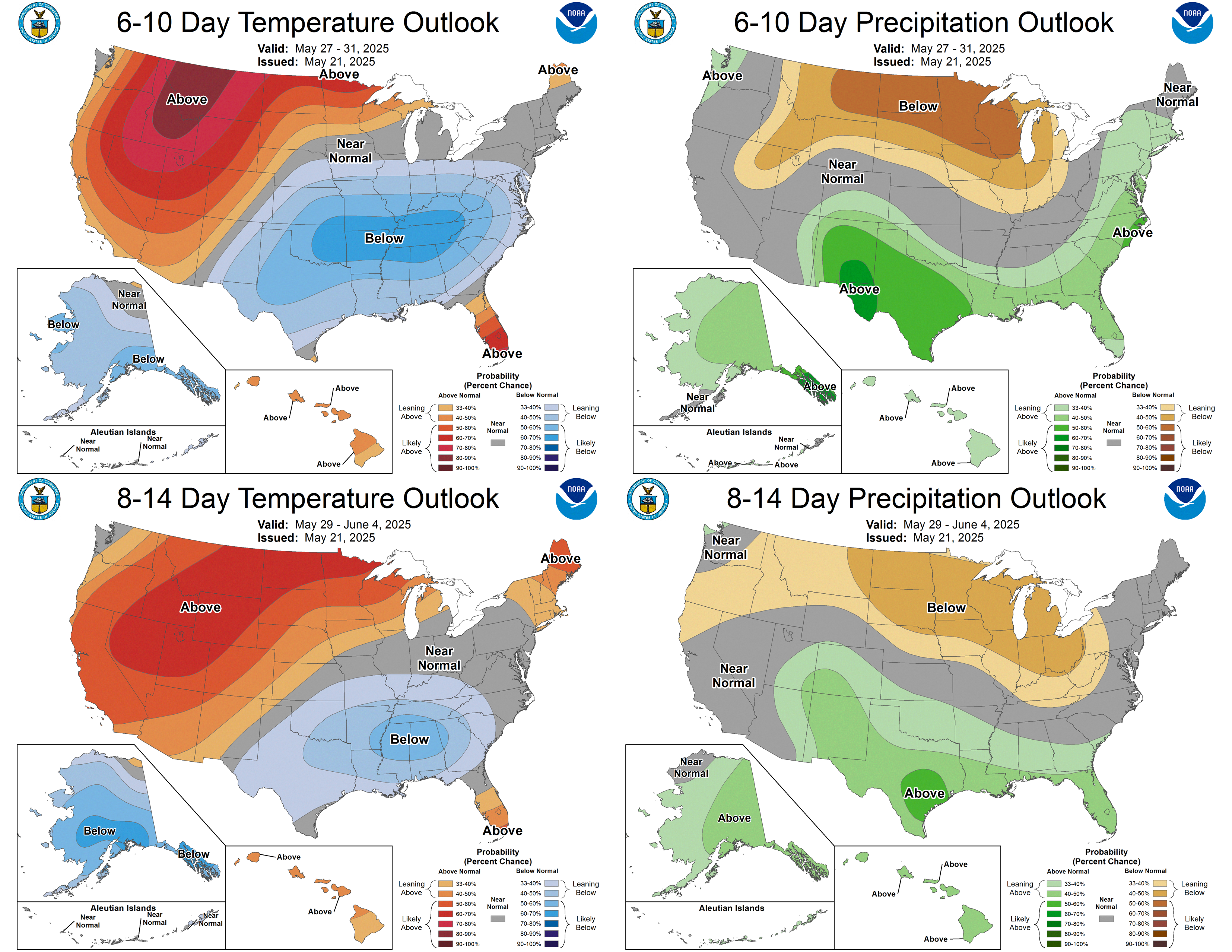
Crops and pests
Soybeans and corn are still emerging, albeit more slowly with the recent cooler weather. Soybeans are between emergence and V1 (first trifoliate emerged), and corn is between emergence and V4.
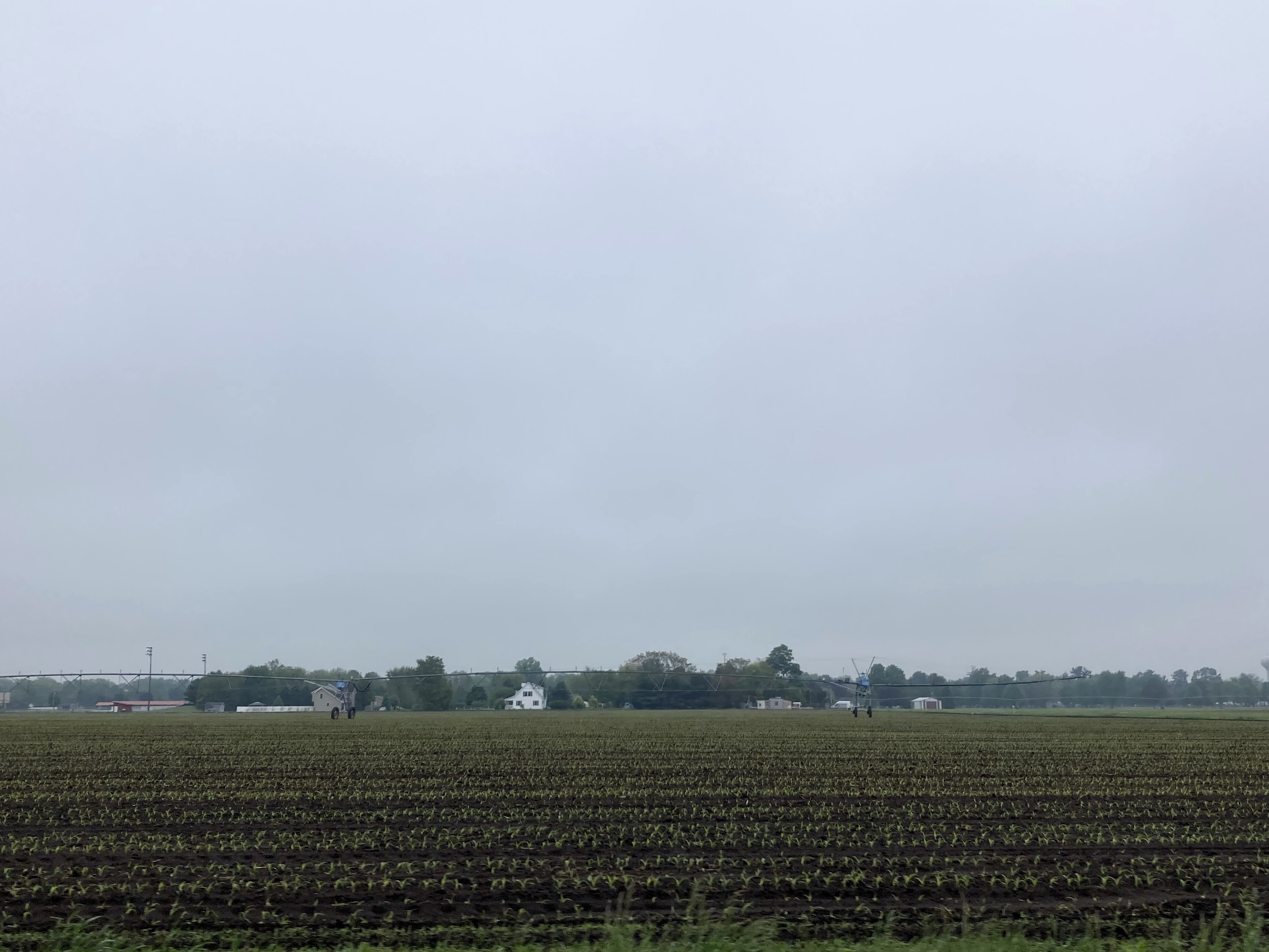
Bucket traps in Berrien (near Berrien Springs), St. Joseph (Centreville) and Van Buren (Lawrence) counties have caught the following:
True armyworm
|
5/5 |
0 |
2 |
0 |
|
5/12 |
0 |
7 |
0 |
|
5/19 |
0 |
3 |
1 |
Black cutworm
|
5/5 |
11 |
19 |
1 |
|
5/12 |
9 |
26 |
0 |
|
5/19 |
|
0 |
0 |
Winter wheat heads range from barely emerging to fully emerged and starting to flower. Minor foliar disease and insect pressure are present in most fields. The preventative fungicide application for Fusarium head blight or head scab should occur during flowering or within three to four days afterward for best results. Depending on the product and weather conditions, some applications could be made slightly earlier or later.
Potatoes continued to emerge this past week, and early planted acres are entering tuber initiation. Water uptake increases significantly during tuber initiation. Colorado potato beetle adults are out in fields, and seed treatment insecticides on tubers planted before April 1 have timed out and may not provide adequate potato beetle control.
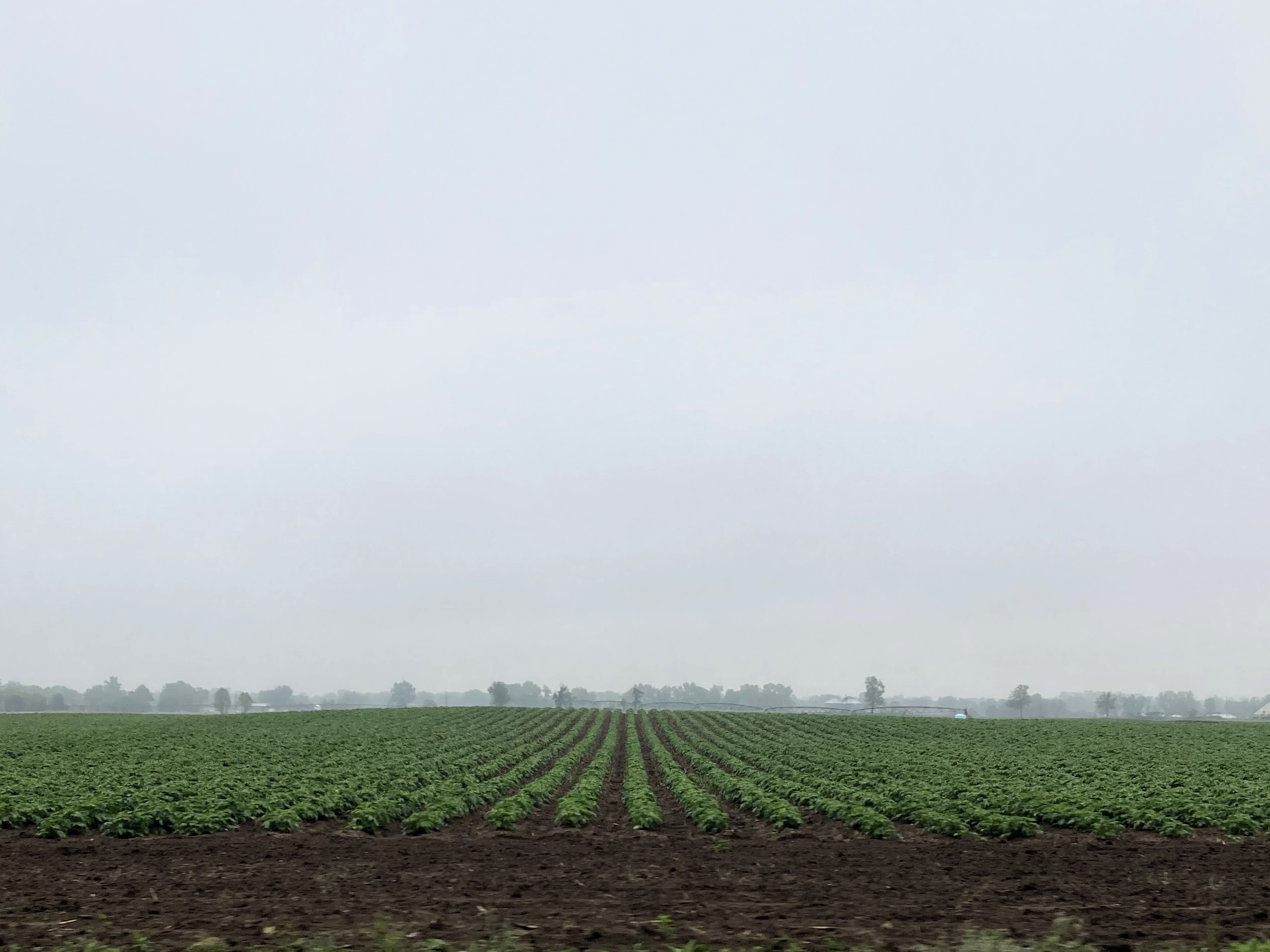
Alfalfa buds are forming, and grass forage seedheads are emerging. First cuttings were scheduled for this week on some fields, but the weather has not cooperated. As soon as the skies clear and fields can dry out, hay cutting is expected. Some growers worked ahead of the rain harvesting small grains for baleage. Alfalfa weevil populations are declining. Producers who applied an insecticide to treat for alfalfa weevil should watch for secondary outbreaks from aphids and other pests until natural enemy populations can bounce back.
Weekly water use
Recent rainfall has helped maintain good soil moisture, and the weather conditions are keeping crop water use below normal. Estimated crop water use for corn and soybeans remains low, under 40 inches per week across the three locations.
Wheat is currently at peak crop water demand during flowering. Although recent rainfall has supported its water needs, continued monitoring is important to avoid potential stress or disease.
With temperatures expected to rise next week, it’s important to continue monitoring local weather and soil conditions to adjust your irrigation strategy as the season progresses. Tools like Irrigation Scheduling Tools can help estimate crop water needs and decide timing and application.
Estimated weekly crop water use for field crops in Michigan (inches/week) for the week of May 19-25, 2025.
|
Crop |
Growth stage |
Constantine |
Entrican |
Hart |
|
Corn |
VE |
0.07 |
0.06 |
0.06 |
|
V2 |
0.14 |
0.12 |
0.13 |
|
|
V4 |
0.14 |
0.12 |
0.13 |
|
|
Soybeans |
VC Cotyledon |
0.14 |
0.12 |
0.13 |
|
V1 1st Node |
0.21 |
0.18 |
0.19 |
|
|
V2 2nd Node |
0.35 |
0.30 |
0.32 |
|
|
Wheat |
Leaf elongation |
0.62 |
0.53 |
0.39 |
|
Jointing |
0.71 |
0.61 |
0.45 |
|
|
Boot / Heading / Flowering / Grain fill |
0.76 |
0.65 |
0.48 |
The table above presents estimated crop water use for various field crops across three locations in Michigan. This data helps irrigation management decisions by showcasing potential crop evapotranspiration, calculated based on reference evapotranspiration and crop coefficients for each crop growth stage. It is crucial to note that crop water use values vary across regions due to differences in weather conditions, growth stages, agronomic practices and soil properties.
When using these values for irrigation scheduling, be mindful that they assume all applied irrigation water will be utilized by the plants without any loss. Additionally, these values do not account for any precipitation that may occur during the week of calculation.
Reference evapotranspiration data was obtained from Michigan State University Enviroweather, which also offers a model for determining potential crop evapotranspiration. To access this tool, visit Enviroweather, click on "Crops," select your crop and use the potential evapotranspiration tool by choosing your nearest weather station, the latest date of interest and other crop information.
Field Crops Virtual Breakfast Series
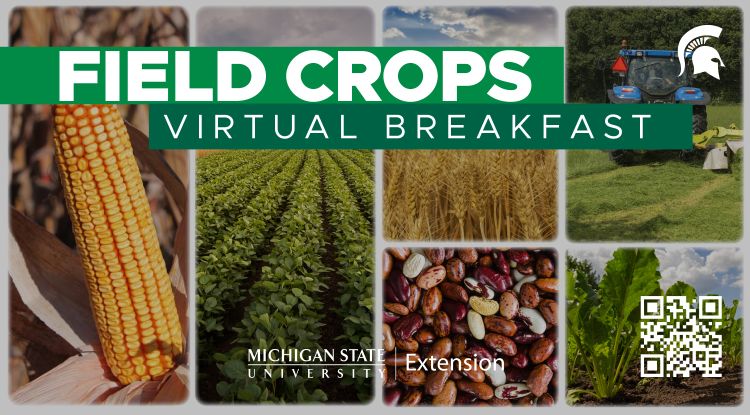.jpg?language_id=1)
Heat stress and wheat, presented by Dennis Pennington, was the topic for the MSU Extension Field Crops Virtual Breakfast Series this week. Wheat is most vulnerable to heat stress during flowering and grain fill, a period of about 28 to 32 days in Michigan. Temperatures exceeding 88 degrees Fahrenheit can affect pollination, reduce kernel fill and result in kernel abortion.
Recordings of this and all the Virtual Breakfast meetings are closed-captioned and available at the Field Crops Virtual Breakfast webpage and the MSU Extension Field Crops Team social media platforms: Facebook, Spotify, YouTube, Apple Podcasts and Twitter/X.
This work is supported by the Crop Protection and Pest Management Program [grant no 2024-70006-43569] from the USDA National Institute of Food and Agriculture. Any opinions, findings, conclusions, or recommendations expressed in this publication are those of the author(s) and do not necessarily reflect the view of the U.S. Department of Agriculture.



 Print
Print Email
Email




